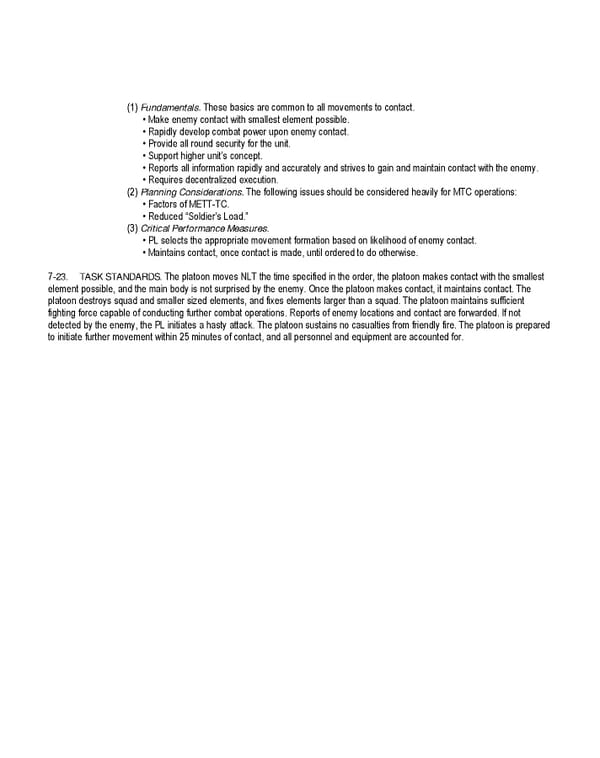(1) Fundamentals. These basics are common to all movements to contact. • Make enemy contact with smallest element possible. • Rapidly develop combat power upon enemy contact. • Provide all round security for the unit. • Support higher unit’s concept. • Reports all information rapidly and accurately and strives to gain and maintain contact with the enemy. • Requires decentralized execution. (2) Planning Considerations. The following issues should be considered heavily for MTC operations: • Factors of METT-TC. • Reduced “Soldier’s Load.” (3) Critical Performance Measures. • PL selects the appropriate movement formation based on likelihood of enemy contact. • Maintains contact, once contact is made, until ordered to do otherwise. 7-23. TASK STANDARDS. The platoon moves NLT the time specified in the order, the platoon makes contact with the smallest element possible, and the main body is not surprised by the enemy. Once the platoon makes contact, it maintains contact. The platoon destroys squad and smaller sized elements, and fixes elements larger than a squad. The platoon maintains sufficient fighting force capable of conducting further combat operations. Reports of enemy locations and contact are forwarded. If not detected by the enemy, the PL initiates a hasty attack. The platoon sustains no casualties from friendly fire. The platoon is prepared to initiate further movement within 25 minutes of contact, and all personnel and equipment are accounted for.
 Ranger Handbook Page 135 Page 137
Ranger Handbook Page 135 Page 137